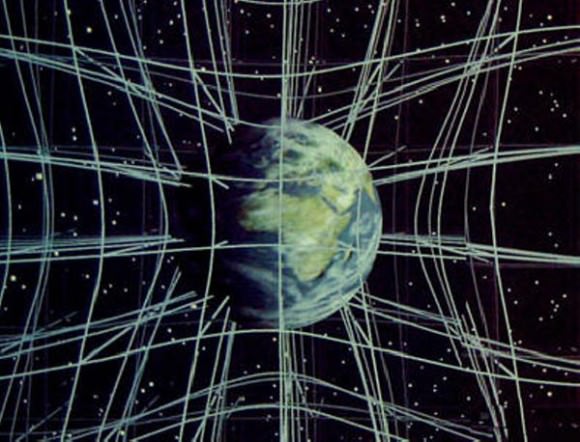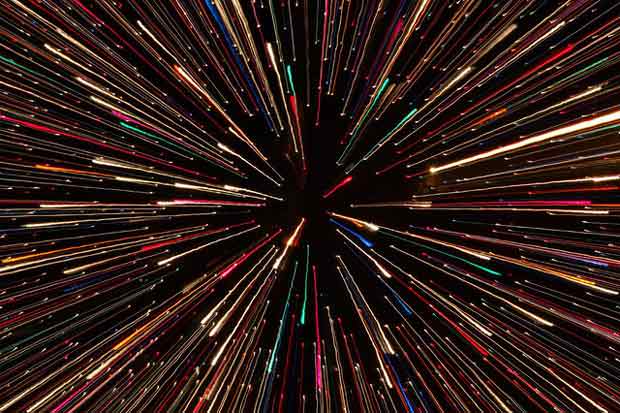[/caption]
From a photon’s point of view, it is emitted and then instantaneously reabsorbed. This is true for a photon emitted in the core of the Sun, which might be reabsorbed after crossing a fraction of a millimetre’s distance. And it is equally true for a photon that, from our point of view, has travelled for over 13 billion years after being emitted from the surface of one of the universe’s first stars.
So it seems that not only does a photon not experience the passage of time, it does not experience the passage of distance either. But since you can’t move a massless consciousness at the speed of light in a vacuum, the real point of this thought experiment is to indicate that time and distance are just two apparently different aspects of the same thing.
If we attempt to achieve the speed of light, our clocks will slow relative to our point of origin and we will arrive at our destination quicker that we anticipate that we should – as though both the travel time and the distance have contracted.
Similarly, as we approach the surface of a massive object, our clocks will slow relative to a point of higher altitude – and we will arrive at the surface quicker than we might anticipate, as though time and distance contract progressively as we approach the surface.
Again, time and distance are just two aspects of the same thing, space-time, but we struggle to visualise this. We have evolved to see the world in snapshot moments, perhaps because a failure to scan the environment with every step we take might leave us open to attack by a predator.
Science advocates and skeptics say that we should accept the reality of evolution in the same way that we accept the reality of gravity – but actually this is a terrible analogy. Gravity is not real, it’s just our dumbed-down interpretation of space-time curvature.

Astronauts moving at a constant velocity through empty space feel weightless. Put a planet in their line of trajectory and they will continue to feel weightless right up until the moment they collide with its surface.
A person on the surface will watch them steadily accelerate from high altitude until that moment of collision. But such doomed astronauts will not themselves experience any such change to their velocity. After all, if they were accelerating, surely they would be pushed back into their seat as a consequence.
Nonetheless, the observer on the planet’s surface is not suffering from an optical illusion when they perceive a falling spacecraft accelerate. It’s just that they fail to acknowledge their particular context of having evolved on the surface of a massive object, where space-time is all scrunched up.
So they see the spacecraft move from an altitude where distance and time (i.e. space-time) is relatively smooth – down to the surface, where space-time (from the point of view of a high altitude observer) is relatively scrunched up. A surface dweller hence perceives that a falling object is experiencing acceleration and wrongly assumes that there must be a force involved.
As for evolution – there are fossils, vestigial organs and mitochondrial DNA. Get real.
Footnote: If you were falling into a black hole you would still not experience acceleration. However, your physical structure would be required to conform to the extremely scrunched up space-time that you move through – and spaghettification would result.

